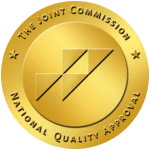Substance Abuse in Aging Populations

Most people are aware that substance abuse in the United States is rampant, with millions addicted or dependent on substances like alcohol and opioids. But, when most of us think of addiction, we think of younger people, typically between the ages of 18 and 30 and typically, not seniors. While it’s true that substance use generally decreases as adults age, substance abuse in aging populations is a serious problem, with an estimated 1 million adults aged 65 or older suffering from a substance use disorder in 2014, and 2.8 million over the age of 50. Drug abuse among seniors is also on the rise, with illicit drug users over the age of 55 expected to move from 2.2% of seniors to 3.1% by 2020.
The Baby Boomer Effect
While drug use among seniors is increasing and expected to continue to increase, this is in part because of the baby boomer effect. Baby Boomers, the generation born between 1946 and 1964 are entering senior populations. This generation also historically had a higher rate of drug usage than any other generation, leading to confusing statistics of teens and twenty-year old’s topping drug-usage statistics in the 1970s and 1980s, 30-40 years in the 1980s-1990s, and now seniors, aged 50-65+ using drugs at a higher rate than teens. While young people are still more likely to use drugs, and more likely to abuse them – and most frequent drug users are between the ages of 18 and 25 – seniors face more risks, and currently overdose or experience hospitalization because of substance abuse at a higher rate than teens.
Increased Health Risks from Substance Abuse in Aging Populations
While seniors are typically less likely to abuse drugs than teens and young adults, they are more likely to have chronic health conditions, prescription medication, and weakened immune systems. As a result, seniors are more likely to face negative health consequences, including physical and mental health problems and face a higher risk of overdose related death or hospitalization.
This is especially true in users who also take prescription medications, which may interact with substances in unintended ways.
What Substances are Seniors Using?
Most seniors abuse alcohol, (6 million), marijuana, and opioids. One report by the NSDUHs, defining binge drinking as having 5 or more drinks on a single occasion, showed that 3.4 million adults aged 64 or older reported binging, with more than ¼ of those reporting frequent binging or heavy alcohol use.

DAWN showed that in 2011, more than 750,000 seniors were admitted to hospital visits for illicit drug use or drug use in combination with alcohol or prescription medication. Of these, the vast majority involved the use of prescription painkillers such as hydrocodone and oxycodone, with a smaller percentage involving abuse of benzodiazepines, alcohol in combination with other drugs, antidepressants, cocaine, heroin, and amphetamines.
In every case, alcohol was the most commonly abused and the most frequent cause of hospitalization and overdose, followed closely by opioid related drugs, such as narcotic painkillers.
Prescription Painkiller Abuse in Seniors
While alcohol is the most commonly abused substance, prescription painkillers are a close second. These substances are primarily narcotic opioid painkillers, like oxycodone and Percocet. Many seniors suffer from chronic pain, need surgery, or have conditions that require painkillers, such as arthritis. Doctors often prescribe painkillers easily, trusting that older users will be less prone to addiction and more level headed about use.
However, any long-term substance use leads to tolerance. This is especially problematic with opioids, which agonize opioid receptors in the brain, mimicking a natural process in the body. The body naturally changes to accept increased levels of peptides in the opioid receptors, leading to tolerance. So, someone taking a painkiller for arthritic pain may find that one pill no longer works – they have to take two. This process of tolerance leads many users to add on more as they self-medicate, developing an abnormal dependence and possibly eventually an addiction.
Studies show that 17-40% of all prescription medication in the United States is used by populations over the age of 50. This becomes a crucial factor when 40% of seniors also have 3 or more prescription medications, often for chronic illnesses. But, as doctors become more aware of substance abuse, they are largely simply limiting supply, without treating addiction. As a result, an addiction to a prescription opioid could result in an addict seeking out cheaper alternatives, like heroin, which is chemically similar to oxycodone.
An Untreated Epidemic
While nearly 3% of adults over the age of 65 suffer from a substance use disorder, many never seek out or get treatment until they have been hospitalized. Studies show that this phenomenon likely results from a combination of ageism, lone adults who no longer have close family members, and shame.
For example, many children see substance use disorders and they allow ageism to influence their thinking. “She doesn’t have too much longer to live anyway”, “Drinking is the only thing that makes him happy anymore, I can’t take that away”.
Others are either forcing themselves to ignore the fact that a respected adult needs their care, or are ashamed of it and don’t want others to find out, therefore working to hide the problem – enabling the senior in their care to continue abuse. While it often seems like the nice thing to do to allow a senior to continue using, doing so could dramatically shorten and reduce the quality of their remaining years – while separating them from the people they love.
Identifying Substance Abuse in Seniors

Seniors can become addicted in the same way as younger adults. However, because they typically abuse socially accepted substances such as alcohol and prescription medication, they typically hide it better. This can make identifying substance abuse in a family member or a friend more difficult than in a younger adult, but you can still watch out for signs and symptoms.
- Increases in substance use – If someone increases the pills they are taking, takes them more frequently, or combines them with other substances and pills, they may have a problem. If you suspect your loved one has a problem, check the dosage recommendation on the bottle (or online) and cross reference it with what they are taking.
- Multiple prescriptions from different doctors – Many people who are addicted to substances engage in a practice known as doctor shopping, where they attempt to get the same prescription from multiple doctors, often in several states. While this is less common than it used to be, because most opioid prescriptions are logged into an inter-state database, it can still be a problem.
- Combining substances – If you know that your loved one should not be drinking with their medication and they start, it is a clear sign of a problem.
- Changes in behavior – major changes in behavior, increases in selfishness, aloofness, or secretiveness are all indicative of a problem. While these changes can be a result of other life occurrences, they are a red flag if combined with other signs of addiction.
- Guilt or excuses – Someone expressing guilt or giving excuses about taking medication is not taking it in a prescribed way, unless they have a problem with taking medication in general. You can also look for secretiveness, having substances with them at all times, and hiding how much or when they take pills.
While there are many other signs of substance abuse in seniors, these signs are among the biggest warning signs. If your loved one exhibits any of them, or avoids talking about substance use with you, it’s time to talk to them about their problem.
Substance abuse in aging populations is a public as well as a personal concern, largely because older adults suffer more from drug use. Both alcohol and prescription painkiller substance dependence present a severe risk, resulting in worsening medical conditions, high blood pressure, stroke, diabetes, osteoporosis, memory loss, and mood disorders. Combining drugs or medications, and abusing them also affects seniors more strongly than young people.
If someone you love is using, it’s important to get them help. While you may have to stage an intervention, or otherwise take drastic measures, getting your loved one into addiction treatment will help them to go through detox in a safe medical environment, get cognitive behavioral therapy to treat mental addiction, and learn the skills to cope with the underlying problems and stresses behind their addiction. Seniors are especially vulnerable to substance caused health problems, and getting someone help could greatly increase their quality of life.
If you or someone you love is struggling with substance abuse, contact us today and speak with one of our experienced and professional intake advisors, we’re here to help. Beginnings Treatment Centers is located in beautiful and sunny Southern California in Orange County, which has one of the most active and best recovery communities in the United States.

